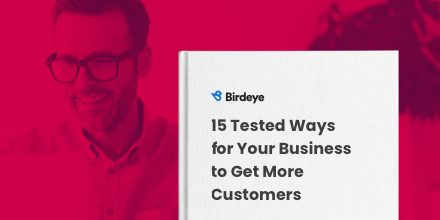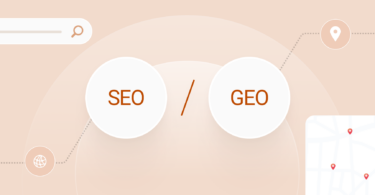Brand identity isn’t just about your logo or color palette; it’s the total experience customers have with your brand. However, for multi-location businesses, building and maintaining a consistent identity across markets is a significant challenge. Disjointed messaging, mismatched visuals, and siloed strategies can dilute your brand’s impact and weaken trust. Worse, it leads to lost brand recognition, confused customers, and missed growth opportunities.
That’s why creating a strong brand identity is non-negotiable and more achievable than ever with AI-powered brand tools. Whether you’re just getting started or trying to unify branding across dozens of locations, this guide breaks down everything you need to know to define, develop, and scale a brand identity that sticks.
In this blog, you’ll learn:
- What makes a brand identity work
- Key elements, real-world examples, and building steps
- How purpose-built AI like Birdeye’s BrandAI and Industry AI solves identity challenges for scaling businesses
Bottom Line Up Front
Your brand identity is the first thing customers notice and the last thing they forget. For multi-location businesses, consistency isn’t just important; it’s make-or-break. The good news? Tools like BrandAI make brand alignment easier, faster, and wiser across all channels and locations.
Table of contents
- What is a brand identity?
- Why do you need a brand identity?
- What makes a strong brand identity?
- How to build a brand identity
- Strong brand identity examples
- Brand identity challenges and how purpose-built AI solves them
- Conclusion
- FAQs on brand identity
- Build a consistent online brand identity with Birdeye
What is a brand identity?
Brand identity is the collection of visible and invisible elements that shape how customers perceive your brand. It includes everything from your logo, typography, and color palette to your brand voice, values, and messaging. A clear identity helps your company stand out in a crowded market, build loyalty, and earn lasting trust.
At its core, brand identity defines how your business presents itself to the world and how customers remember and relate to you. It is not the same as your brand image, which is how customers actually perceive you, or your brand, which encompasses the emotional and cultural meaning people associate with your services, products, and values.
Knowing the terms: Brand vs. brand identity vs. brand image vs. branding
| Term | Definition |
| Brand | The emotional connection and perception customers have about a business. |
| Brand identity | The tangible elements a business creates to express its brand visually and verbally. |
| Brand image | The actual perception customers have of your brand based on their experiences. |
| Branding | The ongoing marketing efforts used to shape and influence perception. |
Creating a consistent brand identity helps bridge the gap between how you want to be seen and how you’re actually perceived. That alignment fuels brand recognition, customer loyalty, and long-term success.
Elements of brand identity: What does it include?
A brand identity includes both visual elements and strategic components that shape your entire presence in the market. These core elements work together to form a recognizable and consistent experience for your target audience:
- Logo design: The most recognizable symbol of your brand
- Color palette: Evokes emotion and creates visual consistency
- Typography: Establishes tone, clarity, and style
- Imagery: Supports storytelling and aligns with your brand’s values
- Tone and voice: The verbal identity that reflects your personality and speaks to your target customer
- Mission and values: Define what your brand stands for and guide decision-making
- Messaging: Key phrases or taglines that convey your purpose and connect with customers
- Website and social presence: Your brand’s visual identity and voice in action
- Customer experience: Every interaction that reinforces or weakens your identity
These different elements must be aligned across locations and teams to create a lasting impression.
What are the 5 pillars of brand identity?
To create a strong brand identity, businesses need a structured foundation. These five pillars offer a framework to build, evaluate, and evolve your identity:
1. Visual identity: Your logo, typography, color palette, and imagery form the visual expression of your brand’s personality. These assets must be distinct, memorable, and consistent.
2. Brand voice: Your verbal identity is made up of the words you use, your tone, and how you communicate. It helps establish emotional connections and reinforces authenticity.
3. Brand values: Your brand values define what your company stands for and how it operates. These are foundational to guiding behavior, decision-making, and customer trust.
4. Brand personality: A distinct personality makes your brand human and relatable. Whether it’s bold, calm, witty, or authoritative, your brand’s personality should align with that of your target audience.
5. Brand story: Your brand story gives context to your mission. It helps customers understand where you came from, what you stand for, and why you matter. It builds emotional connection and loyalty.
While it seems like an abstract concept, the importance of brand identity towards establishing a strong reputation and connection with customers can’t be overstated. It is one of the key elements that takes a brand from being a corner store to a household name.
The following section examines the value and importance of brand identity in detail for multi-location marketing.
Why do you need a brand identity?
A brand identity is more than just aesthetics—it’s a strategic tool that builds trust, strengthens brand recognition, and helps your business stand out in a competitive market. Without a clear and consistent identity, even the best services or products risk being overlooked or misunderstood by your target audience.
For multi-location businesses, a unified brand identity is crucial for maintaining cohesion across every touchpoint, whether it’s signage, social media, local advertising, or online reviews. It allows different branches to reflect the same values, voice, and experience, helping customers feel confident that they’re engaging with the same trusted brand, no matter the location.
A well-defined brand identity supports:
- Better customer perception and familiarity
- Increased brand equity and credibility
- Stronger alignment across marketing and internal teams
- Higher engagement with your target customer groups
- A solid foundation for scaling new offerings or expanding into new markets
Birdeye’s State of Online Reviews 2025 report indicates that 67% of consumers believe a consistent brand experience across locations influences their trust and loyalty toward a business. This illustrates why building an identity isn’t just an internal exercise—it has a direct impact on your company’s success.
What makes a strong brand identity?
A strong brand identity goes beyond consistent colors and fonts. It creates an emotional connection, sets clear expectations, and builds credibility over time. For businesses, especially those operating in multiple locations, a unified identity ensures that customers experience the same quality, tone, and values, whether they’re engaging online or visiting a physical branch.
Let’s explore five essential ways to strengthen your brand identity.
Create memorable brand experiences across every touchpoint
Every interaction a customer has with your brand, from your website and social posts to packaging and service quality, shapes their perception. A cohesive and positive brand experience increases customer satisfaction and loyalty.
For multi-location businesses, this means delivering consistent messaging, visuals, and service quality across all outlets. A disjointed experience creates confusion and erodes brand recognition. When done right, brand experience creates emotional resonance, which can turn casual buyers into brand advocates.
Pro Tip: Regularly audit each customer touchpoint to ensure your brand’s visual identity, tone, and service experience align with your intended identity.
Build trust with an authentic brand voice and values
Authenticity drives connection. Customers want to engage with brands that stand for something meaningful. When your brand values are clear, your target audience is more likely to trust your company, believe in your services, and stay loyal long term.
Equally important is consistency. A brand voice that matches your brand personality across marketing, support, and sales channels creates a believable identity that customers can rely on. Birdeye’s research shows that 86% of consumers are more likely to support brands that demonstrate consistent values across all locations.
“Birdeye gives us a great portal that we can manage over 400 locations individually, even locations that are separately branded, everything is stored and uploaded. So we have consistent surveys with location branding. We can see survey results in a snapshot. The ticketing system is amazing, and it has helped us improve our customer experience in just under a year of using Birdeye. We have also increased our online reputation by about two points, which has been amazing.”
Brandon Hegland, The Michaels Organization
Use storytelling to connect with your audience via brand story
Your brand story is a narrative that weaves together your mission, origin, values, and vision. It’s not just what you do, it’s why you exist and why it matters to your target customer.
Great stories humanize brands and help you stand apart from competitors. They reinforce your distinct personality, bring your brand’s products and services to life, and leave a lasting impression.
Example: Patagonia’s brand story focuses on environmental responsibility and ethical business, resonating with outdoor enthusiasts and sustainability advocates.
Prioritize unified branding across digital and physical channels
Today’s customer journey is omnichannel. That means your visual identity, messaging, and brand voice must align across your website, email campaigns, in-store signage, and social platforms.
Inconsistent branding not only weakens your brand image, it confuses potential customers and limits your reach. Strong branding, on the other hand, fosters familiarity and accelerates trust-building.
For multi-location brands, platforms like Birdeye’s BrandAI help automate content generation that’s aligned with your brand guidelines, while tailoring it for each local audience.
How BrandAI maintains consistency at scale
Birdeye’s BrandAI utilizes your brand rules and tone to automatically generate content that aligns with your identity across every location, while Industry AI ensures it meets each vertical's specific standards. Learn more here.
Leverage AI carefully to support, but not replace, your brand identity
AI can be a game-changer for scaling brand identity consistency, but only if it’s used strategically. Generic tools often fail to capture brand nuances or meet industry standards. Worse, they can produce off-brand content that harms your credibility.
“I am a proponent of using AI to help efficiency, especially since I am part of a small, scrappy team. Before BirdAI, I was skeptical about using auto responses because it didn’t speak in our brand voice, and I would often have to make edits to the replies. Now I can probably set up auto responses, which would decrease my hands-on time in BirdEye!”
Sasha Bell, Manager, Brand Marketing, Navia Benefit Solutions
Purpose-built solutions, such as BrandAI and Industry AI, are trained on your brand-specific inputs and vertical data. They deliver content that respects your visual language, tone, and customer expectations.
Pro Tip: Avoid using one-size-fits-all AI tools. Select GenAI platforms that comprehend your industry, adhere to your style guides, and accurately represent your voice.
How to build a brand identity
Whether you’re creating brand identity for a small business or revamping an enterprise-level presence, the steps below provide a structured approach to build a solid foundation.
1. Define your brand strategy
Before designing a logo or selecting a color, define your brand strategy. This includes your mission, brand values, vision, and market positioning. Your strategy should align with your long-term goals and define how you want to be perceived in your industry.
Pro Tip: Explore your competitors’ positioning using tools like Birdeye Competitors AI to find whitespace and differentiate your brand more clearly.
2. Identify your target audience and customer personas
Your brand identity should resonate with the specific group of people you want to reach. Study your target customer demographics, behaviors, and motivations. Use this data to define clear personas and tailor messaging, visuals, and voice to what they care about.
If your company serves diverse markets across locations, create flexible yet unified personas that guide tone and design decisions across regions.
3. Develop your visual and verbal identity
Now, translate your strategy into brand elements that represent your personality and purpose:
- Visual identity: Develop a logo, color scheme, typography, and imagery. These visual elements create consistency and evoke emotion.
- Verbal identity: Define your brand voice, tone, and messaging style. This shapes how you communicate with your customers across various platforms.
Pro Tip: Document these details in a brand identity template so every designer, marketer, or location team stays aligned.
4. Create brand guidelines for core elements
Your brand guidelines serve as the rulebook for using your brand identity across locations, teams, and channels. It should include instructions for logo usage, color codes, tone of voice, photography, iconography, and even social media behavior.
This ensures your marketing efforts remain consistent, whether executed by in-house teams or external partners.
5. Implement and monitor consistently
Launch your new brand identity across all customer touchpoints—website, social media, signage, packaging, email, listings, and support scripts. Ensure every location or department uses the same assets and tone.
Use tools like BrandAI to automate on-brand content creation at scale, and set up monitoring workflows to ensure brand alignment doesn’t drift over time.
Strengthen your brand voice across all platforms with BirdAI
Want to see the impact of Birdeye on your business? Watch the Free Demo Now.
Strong brand identity examples
Examining brands with a strong brand identity can reveal how consistent storytelling, thoughtful design, and emotional resonance come together to create memorable experiences. Below are six real-world examples across key industries, showing what makes each brand identity effective and what other businesses can learn from them.
1. Mayo Clinic
The Mayo Clinic employs a clean visual identity, characterized by a white and blue color palette, serif fonts, and minimalist design, to convey trust, calm, and clinical authority. Their brand voice is educational yet accessible, designed to make complex health information understandable. The Mayo Clinic’s reputation for excellence is tied to its consistent patient-first messaging.
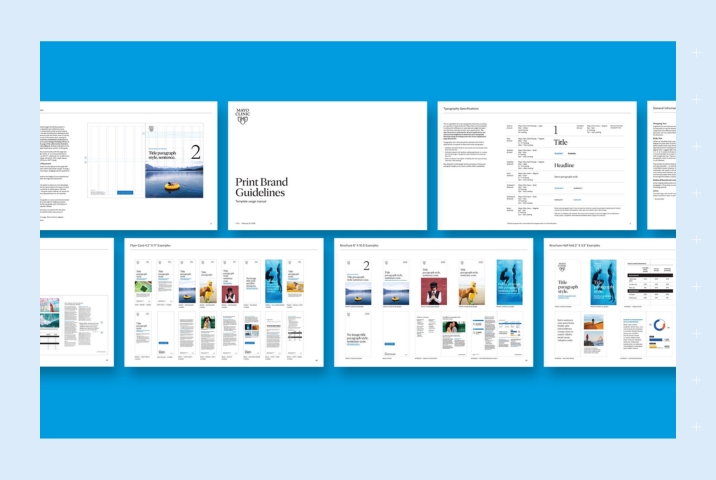
Takeaway:
Healthcare brands should build trust through professional design, an empathetic tone, and clear information. A consistent visual identity, backed by values like transparency and care, strengthens long-term credibility.
2. Coca-Cola (Retail)
Coca-Cola’s brand identity is one of the most recognizable in the world. With its signature red color, timeless logo design, and association with happiness and nostalgia, the brand delivers a universal message with local execution. Their tone is upbeat, familiar, and emotionally resonant.
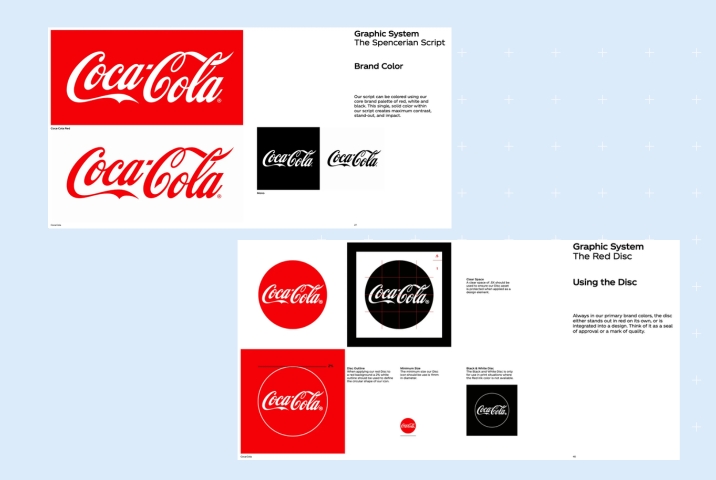
Takeaway:
Universal brands should preserve their core elements while adapting messaging slightly for local markets. Emotional consistency can be just as important as visual consistency when aiming for global brand recognition.
3. Sweetgreen
Sweetgreen is a great example of modern food branding, blending a minimalist green-and-white color palette with storytelling that emphasizes sustainability, sourcing, and community. Their tone is young, passionate, and mission-driven. Even their store designs reflect the brand’s clean, local-first philosophy.

Takeaway:
Restaurants targeting niche or health-conscious audiences can succeed by establishing a clear identity based on strong brand values and transparent sourcing. Keeping visual and physical experiences aligned creates a stronger customer connection.
4. Greystar
Greystar positions itself as a premium provider of modern living, featuring a professional visual identity, subdued color schemes, and polished visuals. Their tone is elegant and service-oriented. Across all listings and properties, the branding reflects comfort, community, and attention to detail.
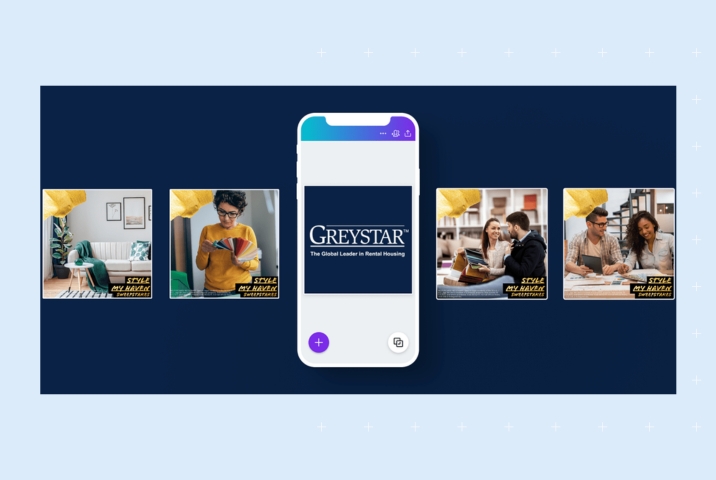
Takeaway:
In property management, maintaining a strong brand identity consistency across listings, on-site signage, and customer service interactions enhances perceived value. Small touches, such as branded photography or signage design, can leave a lasting impression.
5. PwC
PwC (PricewaterhouseCoopers) blends heritage with forward-thinking. Its multi-colored square logo, paired with authoritative typography and a warm but formal tone, reflects adaptability and trust. Their messaging emphasizes collaboration and solving complex problems across various industries.

Takeaway:
Professional service firms can convey credibility without being cold. Balancing visual professionalism with clear, solution-oriented messaging helps position the company as both an expert and a partner.
Brand identity challenges and how purpose-built AI solves them
Developing and maintaining a brand identity is already complex, but for multi-location businesses, the challenges are amplified. Each region may have different target audiences, cultural expectations, marketing teams, and even service offerings.
Without the right infrastructure, maintaining consistency across locations becomes nearly impossible. Inconsistency leads to confused customers, fractured trust, and a weakened brand image.
Let’s explore the most common challenges and how tools like BrandAI and Industry AI help solve them.
Challenge 1: Inconsistent visual and verbal identity across locations
When individual branches use their own variations of your logo, tone, or visual elements, your brand identity becomes diluted. Customers may struggle to recognize whether they’re interacting with the same brand they trust in another city.
Solution:
Birdeye BrandAI ensures every piece of content created at the location level adheres to your brand’s style, tone, and visual identity. From social posts to review responses, BrandAI generates brand-compliant messaging, minimizing human error and maintaining visual coherence across all channels.
Challenge 2: Disconnected messaging across departments and channels
When marketing, customer service, and local managers use different language and tone, your brand voice becomes inconsistent. This erodes customer expectations and makes your brand feel unreliable.
Solution:
BrandAI unifies tone and messaging across all customer-facing content. Meanwhile, Industry AI layers in market-specific knowledge, ensuring your communication is not only on-brand but also contextually relevant for your vertical.
Challenge 3: Difficulty scaling brand identity with speed and accuracy
As your business grows, onboarding new locations and maintaining alignment become increasingly challenging. Training every team on brand values, tone, and design guidelines takes time, and many locations fall behind.
Solution:
AI reduces the need for constant manual oversight. BrandAI acts as a digital brand manager, automatically generating emails, captions, replies, and content that respects your brand strategy. It can instantly scale your brand identity, creating efforts without slowing down execution.
Why BrandAI + Industry AI are game-changers for multi-location brands
Together, they deliver:
1. On-brand content generation tailored by industry
2. Faster execution without sacrificing consistency
3. Alignment with your brand elements, tone, and values across hundreds of locations
4. Time savings of 8+ hours per week per team
Learn more in Leveraging AI for Brand Building
Conclusion
A clear, consistent, and memorable brand identity is the key to standing out and scaling successfully. For multi-location businesses, building that identity across every location, channel, and customer touchpoint requires more than guidelines—it demands intelligent systems.
With the rise of GenAI, tools like BrandAI and Industry AI now enable the delivery of on-brand experiences at scale, without compromising speed or quality. From messaging to visuals, your brand can stay aligned, regardless of how many locations you expand into.
FAQs on brand identity
Start by understanding your target audience, their values, preferences, and motivations. Then, develop a visual and verbal identity that reflects your brand values and speaks their language. Consistency across every touchpoint is key to building emotional connection and brand recognition.
Brand identity is what your company creates, encompassing logos, messaging, tone, and visuals. Brand image is how your customers actually perceive you. You can control identity, but image is shaped by customer experience and perception.
Yes. Many small businesses create powerful branding by focusing on clarity and consistency. Start with a solid brand strategy, define your core elements, and use a brand identity template to stay aligned. Tools like Birdeye’s BrandAI can scale that effort affordably.
When customers see the same style, tone, and values across all channels and locations, they develop trust. That trust leads to higher retention, better engagement, and faster conversions. A consistent brand identity also empowers internal teams to execute more efficiently and accurately.
Build a consistent online brand identity with Birdeye
Your brand identity deserves more than templates and manual processes; it deserves technology that understands your brand voice, your industry, and your customers.
Birdeye is the #1 AI platform built specifically for multi-location businesses, helping you maintain branding consistency, quality, and speed at scale. With our purpose-built tools:
- BrandAI ensures every message, post, and reply is aligned with your approved tone, style, and verbal identity
- Industry AI understands your vertical, automatically customizing content to meet customer expectations in healthcare, retail, restaurants, and more
- Create location-specific, on-brand content across review responses, social media, and listings, without micromanaging every team
- Reduce manual overhead while protecting your brand image, tone, and brand values
Birdeye customers save 8+ hours a week on brand-aligned content creation, while increasing engagement and brand recognition across locations.
Ready to scale your brand identity without sacrificing control? Watch a free demo to learn more about Birdeye.

Originally published

